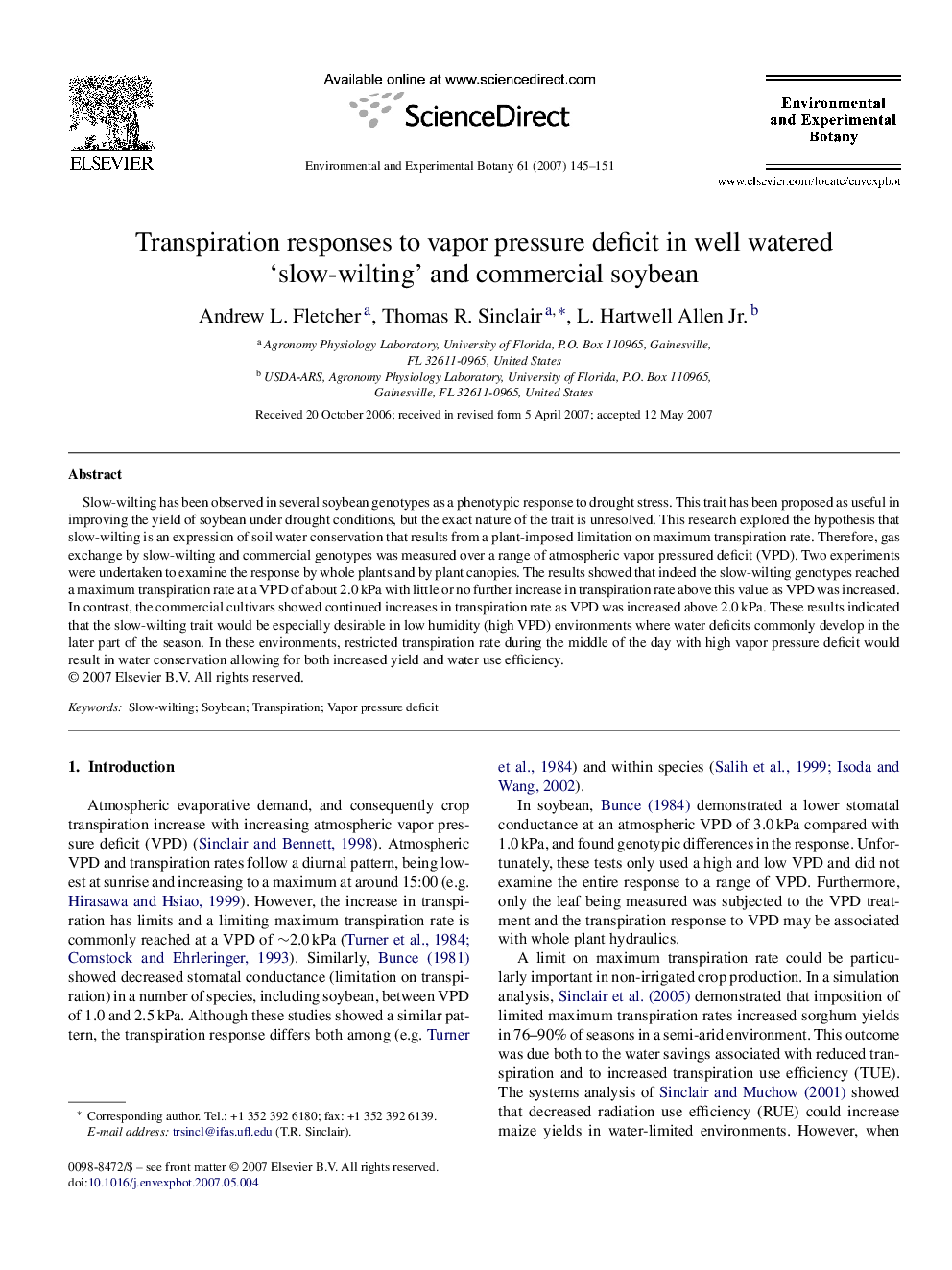| Article ID | Journal | Published Year | Pages | File Type |
|---|---|---|---|---|
| 4555489 | Environmental and Experimental Botany | 2007 | 7 Pages |
Slow-wilting has been observed in several soybean genotypes as a phenotypic response to drought stress. This trait has been proposed as useful in improving the yield of soybean under drought conditions, but the exact nature of the trait is unresolved. This research explored the hypothesis that slow-wilting is an expression of soil water conservation that results from a plant-imposed limitation on maximum transpiration rate. Therefore, gas exchange by slow-wilting and commercial genotypes was measured over a range of atmospheric vapor pressured deficit (VPD). Two experiments were undertaken to examine the response by whole plants and by plant canopies. The results showed that indeed the slow-wilting genotypes reached a maximum transpiration rate at a VPD of about 2.0 kPa with little or no further increase in transpiration rate above this value as VPD was increased. In contrast, the commercial cultivars showed continued increases in transpiration rate as VPD was increased above 2.0 kPa. These results indicated that the slow-wilting trait would be especially desirable in low humidity (high VPD) environments where water deficits commonly develop in the later part of the season. In these environments, restricted transpiration rate during the middle of the day with high vapor pressure deficit would result in water conservation allowing for both increased yield and water use efficiency.
